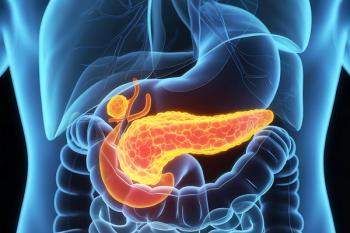
- The Column-02-06-2019
- Volume 15
- Issue 2
Investigating Serotonin in Nuts Using UHPLC–MS/MS
Researchers from Hacettepe University, Ankara, Turkey, have developed an UHPLC–MS/MS method to determine serotonin in raw and roasted nuts and nut products, including bars, chocolate, and spreads.
Researchers from Hacettepe University, Ankara, Turkey, have developed an ultrahigh-performance liquid chromatography–tandem mass spectrometry (UHPLC–MS/MS) method to determine serotonin in raw and roasted nuts and nut products, including bars, chocolate, and spreads (1).
Serotonin (5-hydroxytryptamine) is a neurotransmitter, derived through the serotonin pathway from tryptophan, which acts in the serotonergic neurons of the central nervous system. It plays a large role in the regulation of appetite, anxiety, sleep, mood, and blood pressure with decreasing levels or depletion of its synthesis also being linked to diseases such as depression, obesity, and schizophrenia.
Serotonin is also found in the leaves, roots, flowers, fruits, and seeds of many plants including nuts. As nuts have a wide and varied usage in human consumption, from raw to roasted, or within processed foods, their impact on human health has been well studied. However, there is limited information around the profile of neuroactive compounds found in nuts, with the few studies available being limited to hazelnut and walnut varieties.
To address this shortfall researchers developed a UHPLC–MS/MS method that reliably analyzes serotonin in nuts and nut products, overcoming the complex oily matrix, which is one of the major challenges of nut analysis. The final method uses an environmentally friendly extraction with water without prior defatting to reduce solvent usage. Further research is currently underway utilizing this method to investigate serotonin in different nut varieties.
Reference
- C. Yilmaz et al., Food Chem.272, 347–353 (2019).
Articles in this issue
almost 7 years ago
Tips to Boost Your Trace Analysis Skillsalmost 7 years ago
Latest Advances in the Analysis of Complex Environmental Matricesalmost 7 years ago
Tips & Tricks GPC/SEC: System Peaks or Ghost Peaks in GPC/SECalmost 7 years ago
Innovations in Ion-Exchange Chromatography for mAb Variant Analysisalmost 7 years ago
Characterizing Polydisperse Cellulose Nanocrystals Using AF4-MALSalmost 7 years ago
Chiral Announces Arbor Acquisitionalmost 7 years ago
Vol 15 No 2 The Column February 2019 North American PDFalmost 7 years ago
Vol 15 No 2 The Column February 2019 Europe & Asia PDFNewsletter
Join the global community of analytical scientists who trust LCGC for insights on the latest techniques, trends, and expert solutions in chromatography.





